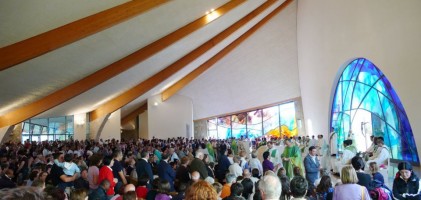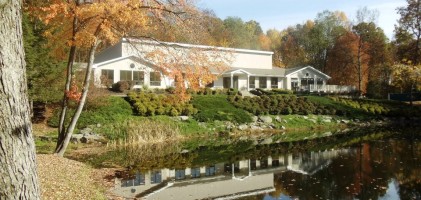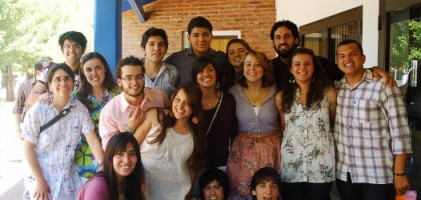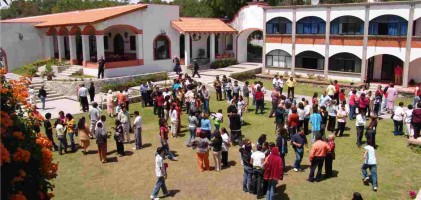Little Towns
The development of the Focolare little towns can be traced through a series of events and intuitions experienced by Chiara Lubich, the founder of the Focolare Movement.
There is a note in one of Chiara Lubich’s diaries which recalls a visit to a Swiss abbey in 1962 where she experienced the first intuitions of the idea of having ‘little towns’ inhabited by the people of the Focolare Movement. She wrote: “It was at Einsiedeln that I understood, from looking at the abbey church below and all that was surrounding it, that a town of the Movement should develop, which wouldn’t be made up of an abbey or hotels, but rather of simple houses, work places, schools – just like an ordinary town.” These developments grew and are known today as little towns or permanent Mariapolis.
The citizens live, work and study there and through their daily actions give witness to the phrase from the Bible: ‘Love one another as I have loved you’.
 Loppiano became the first little city, also known as permanent Mariapolis. It currently has a population of more than 800, 70 of whom come from the 5 continents. There are men and women focolarini, families, young people, lay people involved in working for society, priests, religious and occasionally a bishop.
Loppiano became the first little city, also known as permanent Mariapolis. It currently has a population of more than 800, 70 of whom come from the 5 continents. There are men and women focolarini, families, young people, lay people involved in working for society, priests, religious and occasionally a bishop.
 Mariapolis Luminosa, the Focolare little city for North America, is located in Hyde Park, New York, in the beautiful surroundings of the Hudson Valley. In 1986, at its inauguration, Focolare founder Chiara Lubich wrote in a message: “This city of Mary could be the model of a new humanity where unity has become a reality.” Day after day this plan of unity is coming about. All year round, a great variety of gatherings take place at Luminosa for children, families, teenagers, youth, entrepreneurs, men and women religious and priests.
Mariapolis Luminosa, the Focolare little city for North America, is located in Hyde Park, New York, in the beautiful surroundings of the Hudson Valley. In 1986, at its inauguration, Focolare founder Chiara Lubich wrote in a message: “This city of Mary could be the model of a new humanity where unity has become a reality.” Day after day this plan of unity is coming about. All year round, a great variety of gatherings take place at Luminosa for children, families, teenagers, youth, entrepreneurs, men and women religious and priests.
Other little cities have sprung up and are scattered around the world and are at various points of development. Each town has its own characteristic in harmony with its own environment.
Montet is in Switzerland and, like Loppiano, also has an international population and provides formation courses for members of the Movement.
Ottmaring in Germany has more involvement in ecumenism as does Welwyn Garden City in Great Britain.
Rotselar in Belgium, has a focus on ecology.
There are other little towns in other European countries: Poland, Spain, France, Ireland and Portugal.
 The little towns in Brazil engage in social action, whilst O’Higgins in Argentina has many young people who play a concrete part in its activities.
The little towns in Brazil engage in social action, whilst O’Higgins in Argentina has many young people who play a concrete part in its activities.
Tagatay in the Philippines centers on interreligious dialogue, whilst the building of unity in a multi-ethnic society is typical both of the little town of Krizeyci in Croatia.
In Africa the emphasis is on inculturation based on the Gospel. The first of the African little cites was established in the heart of virgin forest in Fontem, Cameroon. Others have come to life in Kenya and the Ivory Coast.
There are little cities developing in Mexico (called El Diamante), Venezuela, Chile and in Australia, outside Melbourne.
cities developing in Mexico (called El Diamante), Venezuela, Chile and in Australia, outside Melbourne.
These little cities are very modern within their context with shops, arts centers, workshops, schools, churches, meeting places and relaxation areas. They are cosmopolitan centers where the distinctions between religion, culture and tradition are not erased, but are valued as a means for meeting one another united in the commitment to see Jesus’ dream fulfilled: ‘Father, may they all be one, as you and I are one’.

